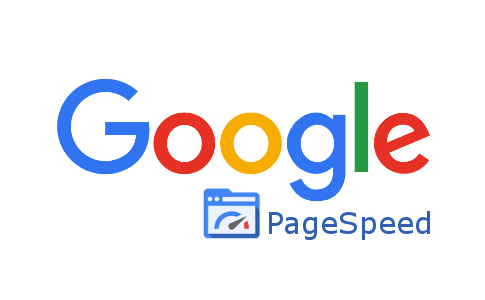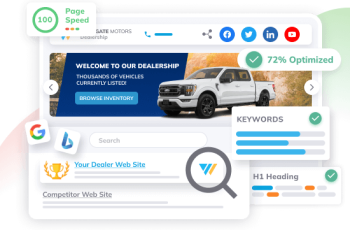Page Speed Insights Update: Is Your Provider Aware?

We know that speed is really important for car dealer websites. It affects both the user experience and your position in the search results (which is highly affected by user experience as well, so it’s either a virtuous or a vicious cycle, depending on your SEO efforts).
Regardless of how many cool features your car dealer website has, customers will never see them, if your pages load up like molasses in January. Moreover, search engines (Google in particular), will downrank your website if it doesn’t deliver a good user experience.
We can’t let that happen, that’s why our SEO team always keeps track of large and small changes that could influence our customers’ website rankings.
In the middle of November, Google announced a PageSpeed Insight Tool (PSI) update. Did it affect auto dealer websites? What kind of scores will your website get now? Should you take any action? Let’s clear things up a bit.
The need for speed
Page speed is an indicator of how fast the content on your webpage loads. It is the time required to fully display the content on a specific page. And it is also the time that it can take to lose a client who doesn’t want to be staring at a half-loaded page for more than 2 seconds. That’s the amount of time that an average user expects a website to fully load with today’s technology.
Google loves blistering fast websites so much that they developed a service to assess the performance of web pages, and has called it the PageSpeed Insights Tool or PSI.
The PSI not only enables you to detect how fast the content on your page loads, but it also helps you to actively improve this figure. Just enter a URL of a page, and hit “Analyze” to quickly get two detailed reports of what might be slowing that particular page of yours down, on mobile and desktop devices. A web page is rated on a scale from 0 to 100 points, which means the higher the score the better.
November 12th PSI update vs. how it was before
Google states that the PageSpeed Insights Tool is now powered by Lighthouse. Okay Google, but what does that mean?
To be honest, before the update, PageSpeed Insights results had little or nothing to do with well, speed. The scores they gave you were based on a set of rules that Google believed to be the most relevant to page speed and performance. Those scores actually displayed how well, according to Google, a page is optimized for faster loading. But they didn’t really reveal the true experience a user would have when loading your website.
We discovered this back then and even wrote an article about it.
But now things are different. The November PSI updates changed the service drastically. Now it works on the basis of Lighthouse analytics, embedded in the Google Chrome browser.
Lighthouse is an open source tool designed to improve and control the quality of web pages. If PSI previously evaluated a resource for meeting certain conditions and fulfilling tasks, now only the speed is taken into account in order to get a high score.
What we now see is that the scores are calculated based on parameters that are more related to speed:

First Contentful Paint – Marks the time at which the first text or image is painted.
First Meaningful Paint – Measures when the primary content of a page appears and is visible.
Speed index – Indicates how quickly the content of a page is visibly populated.
Time to Interactive – Pinpoints the time at which the page is fully interactive.
First CPU Idle – Identifies the first time at which the page’s main thread is quiet enough to handle input.
Estimated Input Latency – Estimates how long a page takes to respond to a user’s input, in milliseconds, during the busiest 5 second window of page load. If your latency is higher than 50 ms, users may perceive your site as being laggy.
The mobile version of your website is under Google’s microscope
Right after the update was applied, our SEO team checked all of our clients’ websites. We noticed a sudden drop in the PSI scores for mobile devices and took immediate action.
Now all of our client’ websites are getting a green mark, 90-100 (safe zone) for both mobile and desktop devices. We accomplished our best and are proud of it. Among some other changes we have:
- converted JPEG and PNG images to JPEG 2000, JPEG XR, and WebP. These image formats have superior compression, thus a page will load faster and consume less cellular data;
- minified and combined CSS and JavaScript files, thereby reducing the number of requests a site makes every time a user visits it;
- enabled lazy-loading which allowed us to reduce initial page load time, initial page weight, system resource usage, and time to interactive.
Has your current provider done the same for you?

Optimizing for mobile devices is even more important after this update
Google is steadily moving towards a mobile-first index. This year they have already challenged website providers with a Mobile speed update. It was rolled out in July and officially confirmed that page speed is a ranking signal for mobile searches. Before July, page speed was only a ranking factor for desktop searches.
The November update proves again that optimization for mobile devices is what Google continues to care about the most. Therefore, the mobile version of your automotive dealer website has become the first place where Google will look to start indexing and determining your site’s rankings.
More updates in the future?
Google’s corporate mission statement is “to organize the world’s information and make it universally accessible and useful.” Mobile usage takes the lead in total traffic and in more user’s behavioural changes, so big G has changed the way they evaluate websites respectively. In fact, Google reported that its search algorithm changes around 500 to 600 times each year. Impressive huh?
But such changes are totally natural and you shouldn’t panic. Unless of course your provider is in the dark about it.
By the way, you can check your scores here and see how your site currently measures up to Google’s standards.
So are you and your website in the clear? If Google wasn’t nice to you, don’t worry, we didn’t write this article to leave you helpless. We offer your dealership our services in order for you to keep pace with the PSI update and any other future updates that lie ahead.
Contact us and let’s get you 90+!



 Search ads
Search ads Mobile ads
Mobile ads